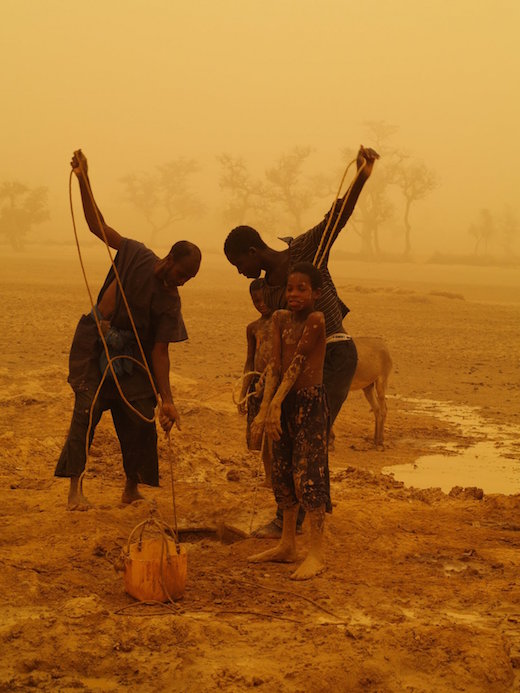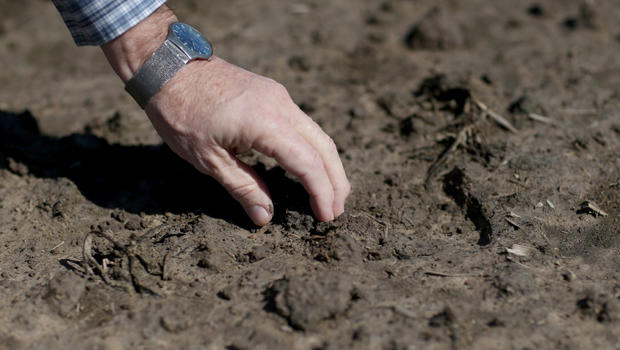Small margins: How half a degree in global warming may affect the world
When the Paris Climate Agreement is signed in New York City on Earth Day, leaders and dignitaries from more than 150 countries around the world will begin pursuing efforts to limit global temperature increases to less than either 1.5 or 2 degrees Celsius (3.4 or 3.6 degrees Fahrenheit) above pre-industrial levels.
The 1.5 and 2 degrees C threshold refers to global mean temperature. For the past 10,000 years, the temperature of the planet as a whole has remained fairly steady, with minor fluctuations of about one degree. For comparison, the last time global mean temperatures have been between 1 and 2 degrees above pre-industrial levels was several thousand years ago with sea-levels of between 19 and 42 feet above present day levels.
While some nations agreed to setting a temperature increase to 2 degrees, leaders in vulnerable nations in the Pacific Islands and West Africa argued that their countries could only withstand a temperature increase of 1.5 degrees. Now new research shows the difference half a degree makes.
A study by European researchers from Germany, Switzerland, Austria and the Netherlands analyzed multiple sets of climate models to outline the impacts of climate change for the two temperature scenarios. Scientists found that the half-a-degree difference would mean putting all tropical coral reefs at risk, higher global sea-level rise, longer heat waves and drought and a drastic reduction in crop yields.
"We found significant differences between 1.5 and 2 degrees," lead author Carl Schleussner, a scientific advisor at Climate Analytics in Germany, told CBS News. "A 2-degree world is simply a place you don't want to live in."
The research is published in Earth System Dynamics, an open access journal of the European Geosciences Union.
Here's a look at how the two temperature scenarios will impact the world.
Heat Waves
The research found that warm spells would last up to 50 percent longer in a 2-degrees increase world compared to 1.5 degrees.
"For heat-related extremes, the additional 0.5 degrees C increase marks the difference between events at the upper limit of present-day natural variability and a new climate regime, particularly in tropical regions," Schleussner said in a press release.
Coral Bleaching
A temperature increase of 2 degrees would put all coral reefs at risk of dying due to coral bleaching. However, with a warming of 1.5 degrees, tropical coral reefs have a better chance of surviving and might be able to adapt to climate change, the report stated. For a 1.5 degrees scenario, only 90 percent of all tropical reefs would be at risk of severe degradation by 2050, declining to 70 percent by 2100.
Sea-level Rise
Models suggest that sea levels will rise 50 cm (1.6 ft) by 2100 if global temperatures increase by 2 degrees. However, Schleussner said that sea level rise will slow down under a 1.5 degrees scenario, rising by 30 cm (just under a foot).
Drinking Water Shortages
If mean temperatures rise by 2 degrees above pre-industrial levels, models predict that the Mediterranean region, South Africa, South Australia and southern South America will see a maximum of 30 percent reduction in water availability, with the percentage varying by region. The Mediterranean, one of the most arid and water scarce regions of the world, will see a median reduction in water availability of 9 percent with a 1.5 degrees increase, nearly half of what it would be if global temperatures rose by 2 degrees. The length of dry spells in the Mediterranean region would also increase from 7 percent to 11 percent with a half-a-degree increase in temperature.
Crop Yields
The half-a-degree difference would be disastrous for tropical agriculture, Schleussner said. The reduction of local tropical maize and wheat yields would accelerate - doubling with a global temperature increase of 2 degrees compared to 1.5. "This was surprising given the large uncertainties with crop yields," Schleussner told CBS News.
Schleussner said that he hopes the research will help to inform the debate about 1.5 and 2 degrees. He believes that this study is a starting point for the scientific community to look at how different changes in global mean temperature will impact different regions of the world.
William Hare, a senior scientist and CEO at Climate Analytics who also took part in the research, said in a press release: "Our study shows that tropical regions - mostly developing countries that are already highly vulnerable to climate change - face the biggest rise in impacts between 1.5 degrees C and 2 degrees C."


